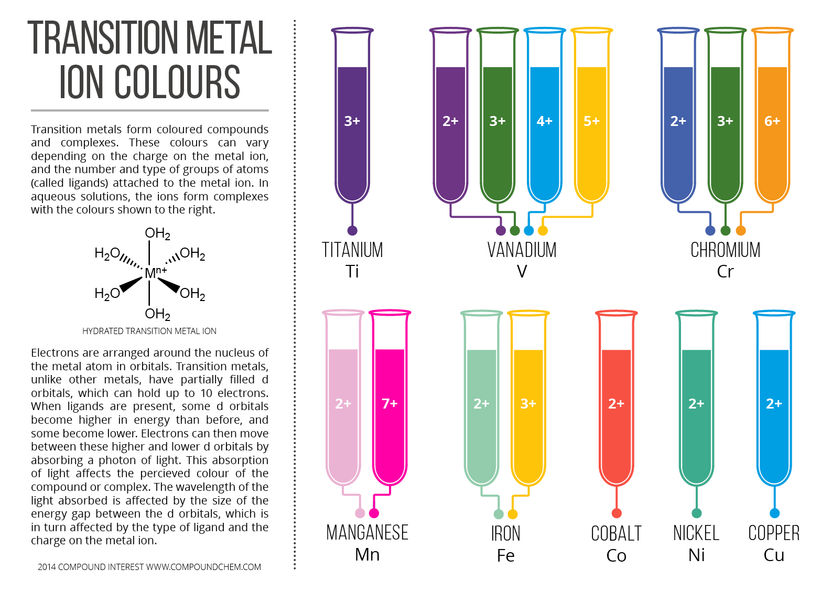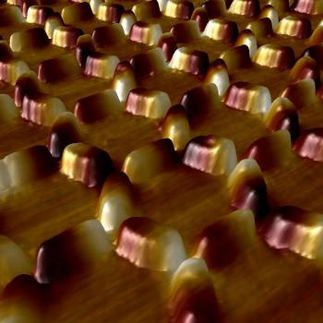A question of style
The reaction rate of many molecules depends on their shape
Most molecules occur in several shapes, which may behave very differently. Using a sorting machine for molecules, a German–Swiss research team can now for the first time directly measure the various reaction rates of different forms of the same compound.
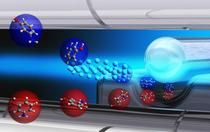
Artist's concept of the sorting mechanism. Conformers with a larger dipole moment (marked blue) are deflected stronger than those with a smaller dipole moment (marked red). This way, one type of conformers can be picked and lead seperately to react with the ultra cool calcium ions.
Yuan-Pin Chang/DESY
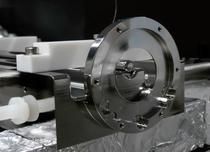
The charged rod gives rise to an inhomogenous electric field in the small slit between the rod and the trough. This field deflects conformers with varying dipole moments differently.
Jochen Küpper/DESY
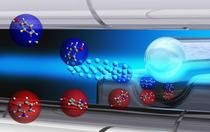
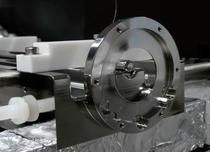
Many chemical compounds have numerous so-called conformers -- different forms of a molecule in which some building blocks are spatially rearranged (rotated). "Even tiny changes in structure can greatly affect the properties of a compound," says Küpper. "We want to know how exactly the molecular structure influences chemical reactions. Different conformers can even lead to different reaction products."
To investigate these differences in more detail, the researchers have built a sorting machine for molecules, which can be used to selectively pick a conformer and feed it into a chemical reaction. The device exploits the fact that generally a change in structure also modifies the so-called dipole moment of a molecule. The dipole moment describes how a molecule interacts with an electric field. The sorting machine generates a non-uniform electric field between an electrically charged rod and a trough. When the researchers send several conformers at once through the narrow slit between the rod and the trough, the field deflects the various conformers to different degrees. The device thus provides sorted beams of different conformers, which can be spatially separated and directed individually into a reaction chamber.
As a test, the teams of Küpper and Willitsch sent two conformers of a well-known compound from the group of aminophenols through the device for sorting. Aminophenols are organic compounds that are used, among other things, for the production of medicines and dyes. The selected conformers differed only in the direction in which a single hydrogen atom is attached to an oxygen atom. "As a result, one conformer has a three times larger dipole moment than the other," says Küpper.
The scientists directed the various sorted beams alternately into a so-called ion trap developed in Basel, in which the two conformers would react with electrically charged calcium atoms (calcium ions). "In the ion trap, the calcium ions are cooled to almost absolute zero at a temperature of minus 273 degrees Celsius. Doing so, they arrange themselves in space and form an ideal target for reactions with the spatially separated conformers," says Willitsch.
"It turned out that one of the conformers has a reaction rate that is twice as high as that of the other," says team member Yuan-Pin Chang from CFEL. A tiny change in structure thus leads to big differences in chemical reactivity. "In this way, the method allows insights into fundamental reaction mechanisms that can lead to more effective syntheses of new molecules, such as active pharmaceutical ingredients," says Willitsch.
As a next step, the researchers want to improve the ion trap so that various ions and molecules could be used as reactants for sorted conformers. In addition, the trap will be combined with a mass spectrometer to determine the reaction products more accurately.
Original publication
Other news from the department science
These products might interest you

isoprime precisION by Elementar Analysensysteme
isoprime precisION stable isotope ratio mass spectrometer
The most flexible, yet powerful isotope ratio mass spectrometer ever created
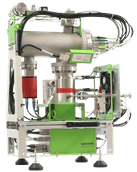
IonTamer ToF MS by Spacetek Technology
IonTamer instruments are time-of-flight residual gas analysers (TOF-RGA) for the analysis of gases
Compact Time-of-flight residual gas analyzer (TOF-RGA) for process analysis
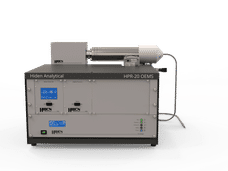
HPR-20 OEMS, Online Electrochemical Mass Spectrometer by Hiden Analytical
Online monitoring and quantification of evolved gases and vapours from electrochemical processes
A complete gas analysis solution, designed to integrate seamlessly with electrochemical applications

PlasmaQuant MS Elite by Analytik Jena
LC-ICP-MS Is the Key to the World of Elemental Species
Highest Sensitivity and Lowest Detection Limits with PlasmaQuant MS Series and PQ LC

BIOS ANALYTIQUE - Soluciones de Renting y Leasing para laboratorios by Bios Analytique
Specialists in the rental and leasing of scientific equipment for laboratories throughout Europe
Whether you have an unexpected requirement or limited budget, we have the perfect solution for you
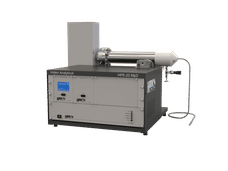
HPR-20 R&D by Hiden Analytical
A specialist benchtop triple filter mass spectrometer for the monitoring of evolved gases & vapours
Providing improved resolution & abundance sensitivity with an ultimate detection limit of 5 ppb sub

Xevo TQ Absolute by Waters
A new Tandem Quadrupole Mass Spectrometer for Quantification with Absolute power
Absolute performance, efficiency, productivity, and confidence for your most challenging compounds
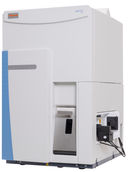
iCAP TQ Triple Quadrupole ICP-MS by Thermo Fisher Scientific
Overcome unexpected interferences, reduce detection limits and improve data quality
Ultralow limits of detection with simplicity - even for the most challenging analytical applications

iCAP RQ single Quadrupole ICP-MS by Thermo Fisher Scientific
Robust ICP-MS with ease of use and high productivity for routine analysis
A complete multi-element analysis solution for your high-throughput routine laboratory

NexION® 5000 by PerkinElmer
NexION 5000 Multi-Quadrupole ICP Mass Spectrometer
NexION 5000 Multi-Quadrupole ICP Mass Spectrometer

expression® Compact Mass Spectrometer by Advion Interchim Scientific
Mass Spectrometry for Chemists: Fast, Easy, Prep-Free Reaction Monitoring at the Bench
Featuring a variety of sample introduction techniques that also allow TLC/MS & direct probe analysis

Thermo Scientific TSQ Triple Quadrupole Mass Spectrometry Systems by Thermo Fisher Scientific
Confident quantitation with triple quadrupole LC-MS systems
Mass Spectrometry Systems

TSQ 9610 GC-MS/MS by Thermo Fisher Scientific
TSQ 9610 GC-MS/MS for superb sensitivity and selectivity with outstanding reliable productivity
Eliminate unnecessary, unplanned instrument downtime, save helium and maximize productivity

Get the chemical industry in your inbox
By submitting this form you agree that LUMITOS AG will send you the newsletter(s) selected above by email. Your data will not be passed on to third parties. Your data will be stored and processed in accordance with our data protection regulations. LUMITOS may contact you by email for the purpose of advertising or market and opinion surveys. You can revoke your consent at any time without giving reasons to LUMITOS AG, Ernst-Augustin-Str. 2, 12489 Berlin, Germany or by e-mail at revoke@lumitos.com with effect for the future. In addition, each email contains a link to unsubscribe from the corresponding newsletter.
Most read news
More news from our other portals
See the theme worlds for related content
Topic World Mass Spectrometry
Mass spectrometry enables us to detect and identify molecules and reveal their structure. Whether in chemistry, biochemistry or forensics - mass spectrometry opens up unexpected insights into the composition of our world. Immerse yourself in the fascinating world of mass spectrometry!

Topic World Mass Spectrometry
Mass spectrometry enables us to detect and identify molecules and reveal their structure. Whether in chemistry, biochemistry or forensics - mass spectrometry opens up unexpected insights into the composition of our world. Immerse yourself in the fascinating world of mass spectrometry!
Topic world Synthesis
Chemical synthesis is at the heart of modern chemistry and enables the targeted production of molecules with specific properties. By combining starting materials in defined reaction conditions, chemists can create a wide range of compounds, from simple molecules to complex active ingredients.

Topic world Synthesis
Chemical synthesis is at the heart of modern chemistry and enables the targeted production of molecules with specific properties. By combining starting materials in defined reaction conditions, chemists can create a wide range of compounds, from simple molecules to complex active ingredients.
Last viewed contents
Northeastern_Ohio_Universities_College_of_Medicine_and_Pharmacy
